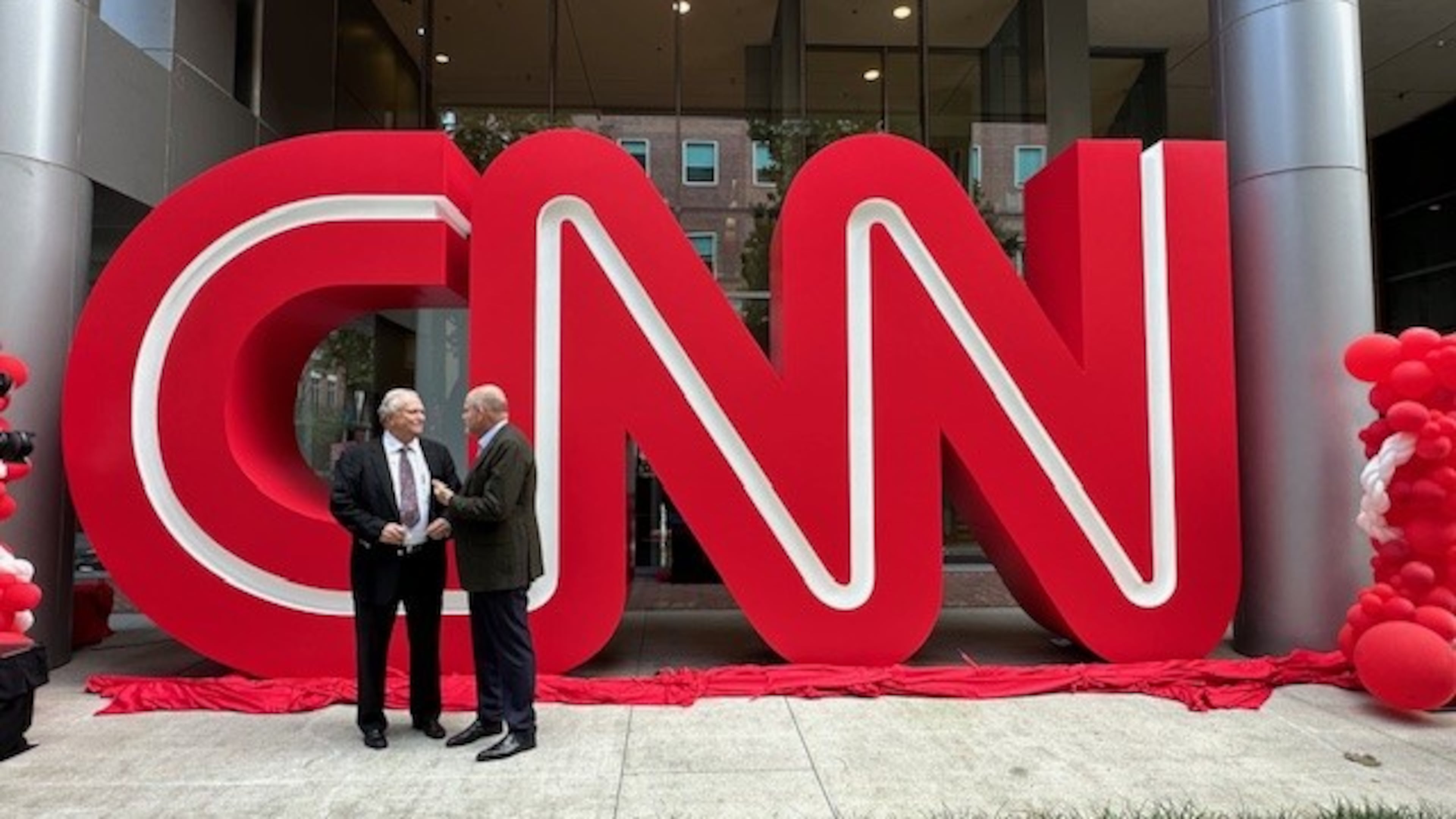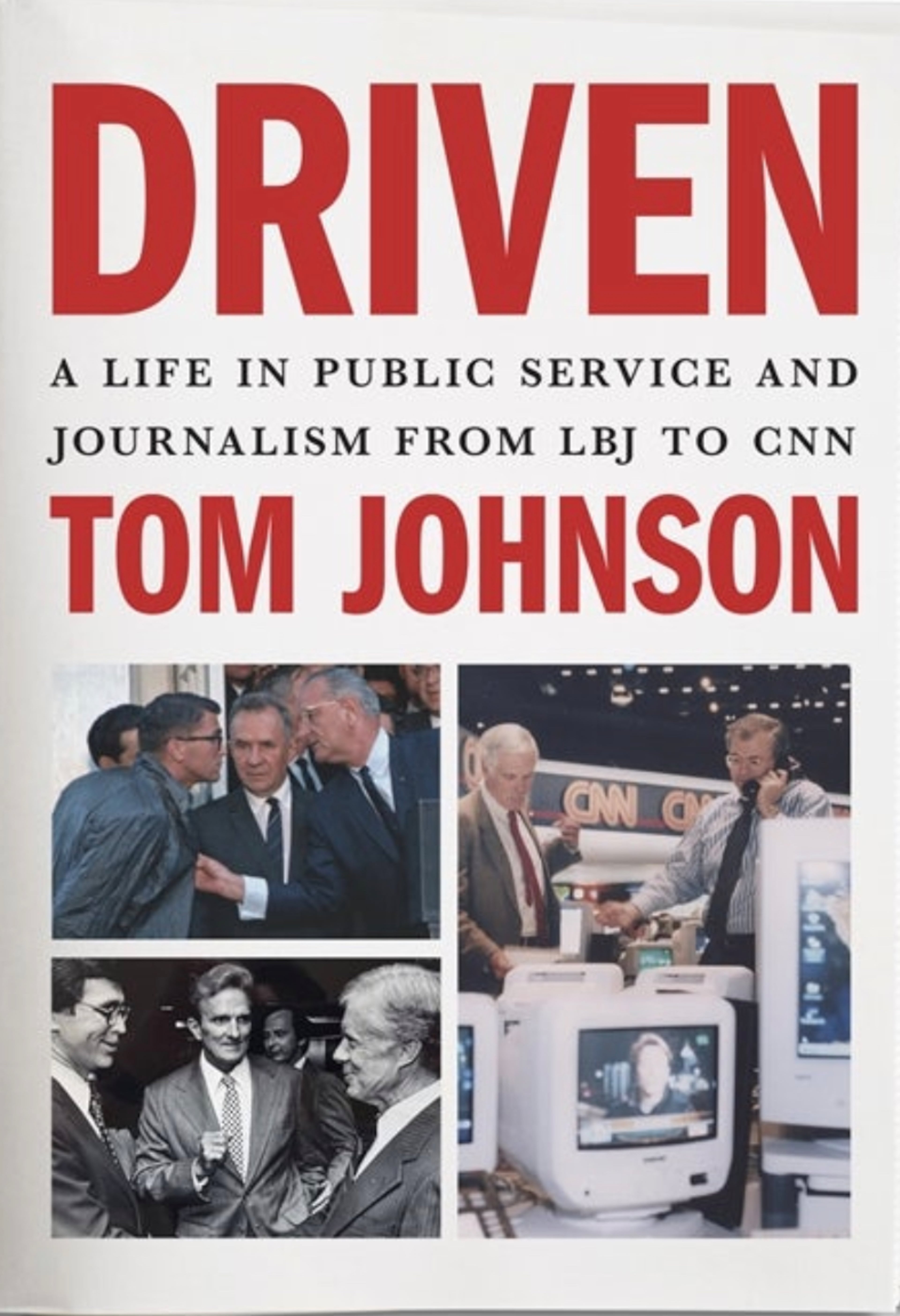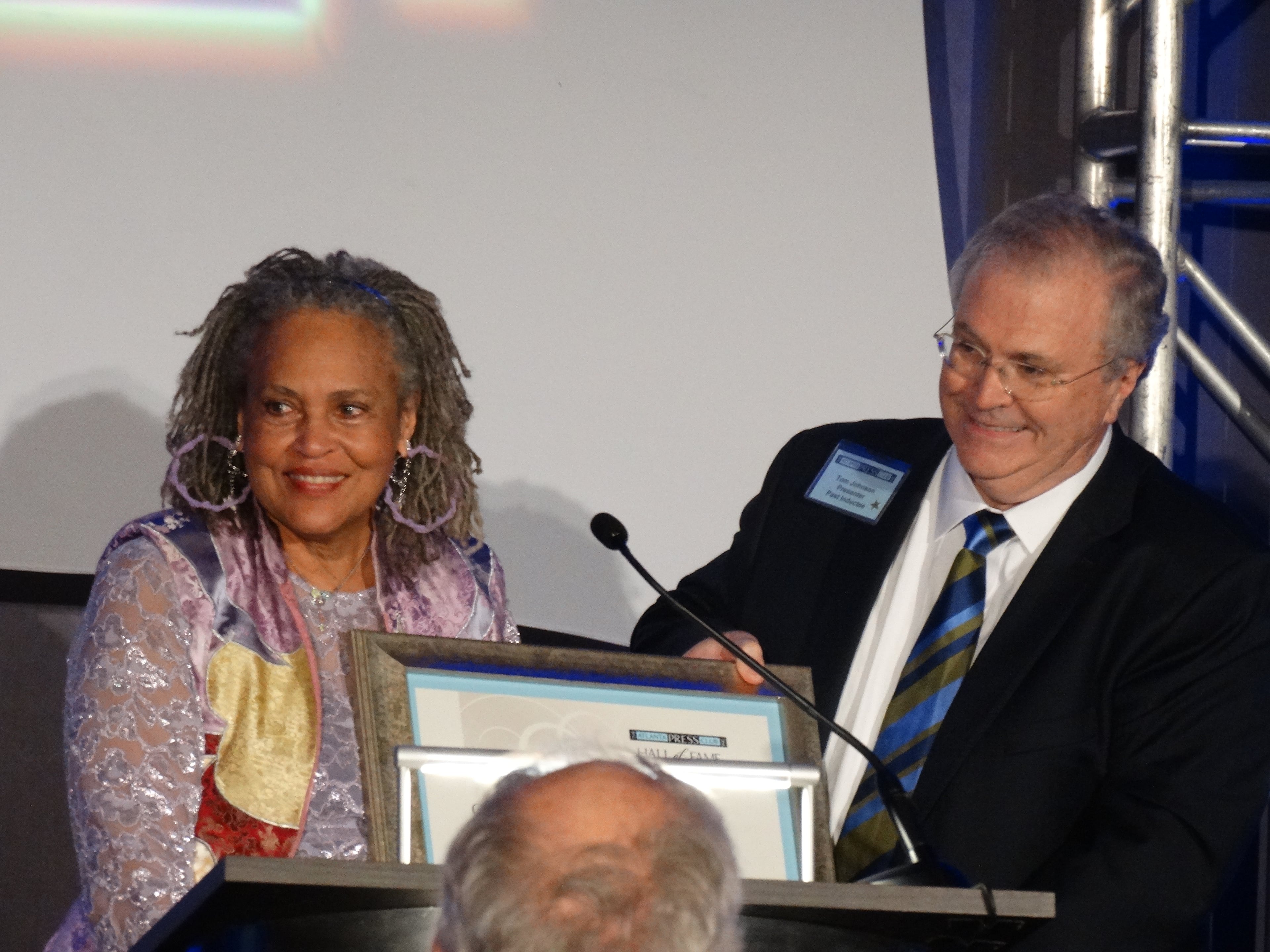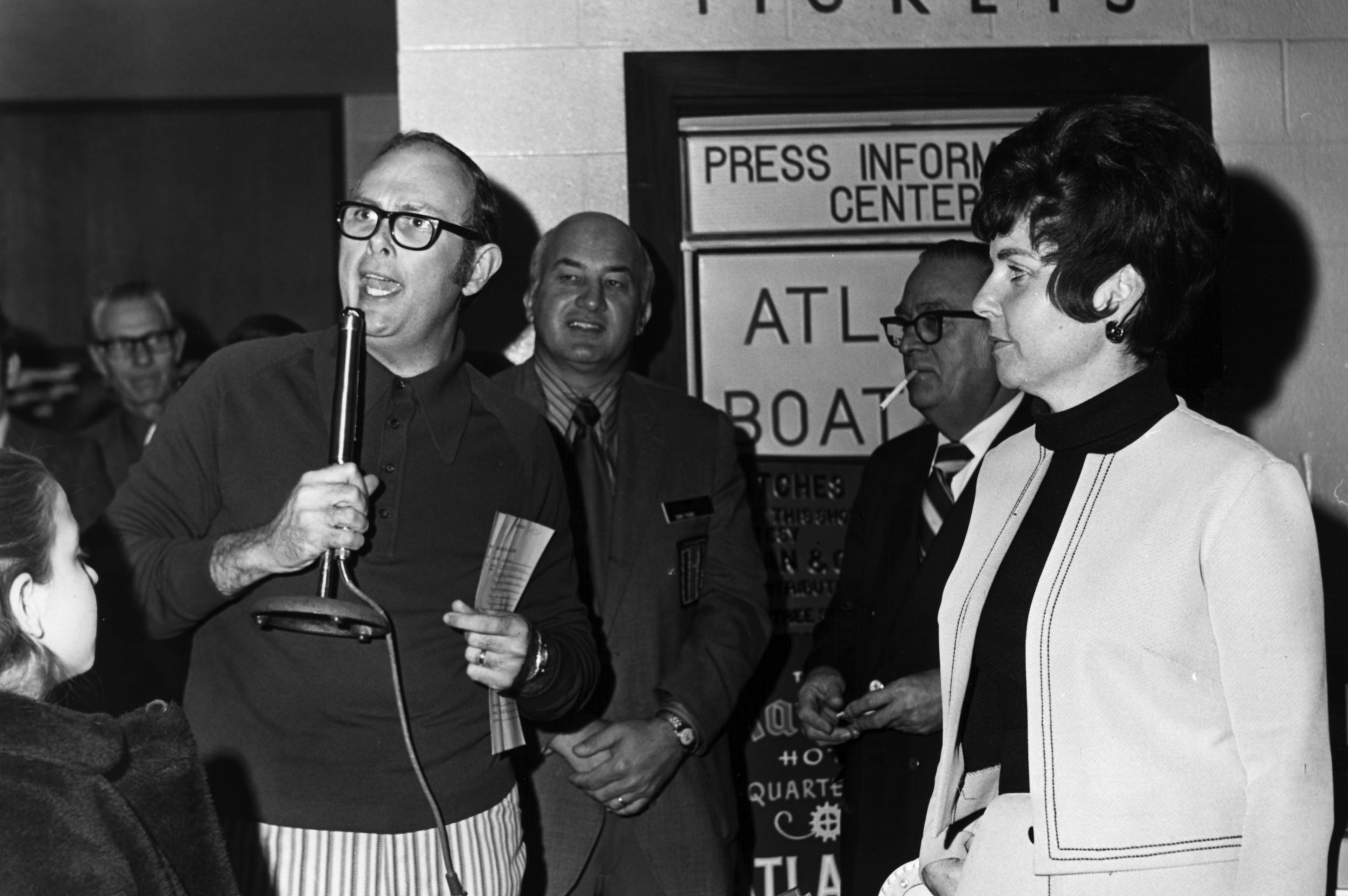‘Driven’ tracks former CNN president’s career highlights and battle with depression

When it came to Macon’s rich and poor in the 1940s and 50s, Tom Johnson’s family was on the lower side of the in-between. His dad, he writes, sold “watermelons and wood” from a pickup truck; his mom, the breadwinner, clerked at their relatives’ grocery store where Johnson himself stocked the shelves.
A hard-working youngster, he made sure the product labels were properly displayed, just as, a few years later, the daily notes he scribbled as President Lyndon Johnson’s deputy press secretary would be meticulously arranged. Sixty years on, they would serve him well as a primary source for his memoir, “Driven: A Life in Public Service and Journalism from LBJ to CNN.”
When young Johnson looked around Macon and saw how the money-side lived, he decided that he wanted to be successful, too. Consequently, he chose a career in journalism, a sure-fire, get-rich-quick scheme if ever there was one.
As unlikely as that may seem in 2025, Johnson certainly made a go of it. He started out in the ninth grade at the Macon Telegraph, where publisher Peyton Anderson took the upstart under his wing. Anderson funded Johnson’s way through the University of Georgia, where he wrote investigative pieces about school desegregation for the student newspaper, the Red and Black. (He was, he says, lucky to have grown up without exposure to racism in his family.)

Among the 75 photographs in “Driven,” there’s a wonderful shot of the author looking sharp and square in his madras coat, interviewing Charlayne Hunter (later Hunter-Gault), who, with Hamilton Holmes, smashed the UGA color line in 1961.
When Johnson informed Anderson about his outsized ambition to become a publisher, Anderson stepped up again to pay Johnson’s way through Harvard Business School. While there, Johnson was accepted in 1965 into the White House Fellows program, where he made an impression on the great Bill Moyers, then LBJ’s press secretary, who became his mentor.
These were dizzying times for the 24-year old. “From the first day,” he writes, “LBJ treated me as a full-time member of the staff.” Appointed deputy press secretary, Johnson “received security clearances, even higher than Top Secret …”
From the inside, he was present for discussions about the use of tactical nuclear weapons during the Vietnam War. He was aware of FBI intercepts confirming that Richard Nixon, the 1968 Republican presidential candidate, was using an intermediary to sabotage the Paris Peace talks. (Privately, LBJ called Nixon’s gambit “treason.”)
For Johnson, LBJ was the best politician he ever met. But as the president was drawn deeper into the Vietnam War, even after his option for an early withdrawal became available, he couldn’t find his way out.
The author is candid about his own mistakes in judgment. Today he accepts responsibility for “(conveying) information about the war that often was delivered far too positively to the American public.” Lamenting further, he admits the war was “disastrously wrong.”
“The failure that I was part of has been hard for me to reconcile,” he writes.
By the time LBJ left office, Johnson had made himself indispensable. He and his family accompanied Lyndon and Lady Bird down to Texas to help look after their considerable business and media interests until the former president’s death in 1973.
Having refined his publishing and networking expertise, Johnson caught the attention of Otis Chandler, a wealthy renaissance man from California. Chandler brought Johnson into the Times-Mirror organization, his family’s diverse media empire that included the prestigious Los Angeles Times.
Johnson was appointed CEO of the West Coast flagship in 1979; a year later, Chandler made him publisher. On Johnson’s watch, the Los Angeles Times advocated for environmental causes and raised concerns about nuclear power. It “increased (its) strong support for the growing Latino community” and pursued controversial “independent coverage of Israeli-Palestinian issues.”
Johnson’s progressive agenda eventually ran afoul of more conservative Chandler family members, but before he got the boot in 1989, the Times had posted “record earnings, record profit margins and its highest circulation levels ever,” writes Johnson.
His ouster was psychologically devastating, but then Ted Turner popped up to offer him the presidency of CNN. Initially, Johnson was skeptical, but Turner assured him, “I want to make CNN the absolute best news network on the planet!”
Turner was “a tremendous visionary” whose mantra was, “You spend whatever you think it takes, pal,” writes Johnson.
“Once,” Johnson recalls, “Ted ordered me to either purchase or lease several blimps.” A seemingly outlandish request at the time, today’s news gathering drones serve much the same purpose as Turner’s projected helium fleet decades ago.
Turner forecast the fall of newspapers and the rise of the so-called 24-hour news model, creating four news channels. He placed a “tremendous number of women in important roles in the company,” writes Johnson, and made Hank Aaron a vice president of Turner Broadcasting. He gave a billion dollars to the United Nations in 1997.
When Saddam Hussein seized Kuwait in 1990 and war was imminent, Johnson convinced the supercompetitive Turner to rapidly deploy elaborate communications equipment, outflanking sluggish preparations by CBS, NBC and ABC.
Moreover, in Johnson’s thrilling, behind-the-scenes account, CNN established a system that would allow the network to transmit audio from Baghdad to a hotel room in Jordan to CNN London then back to Atlanta.
“Every media company based in Baghdad except CNN lost all its transmission capabilities. Only CNN was able to broadcast live audio (of the conflict) to millions of people worldwide.”

After Turner sold out to Time Warner in 1996, Johnson sensed the firewall between entertainment and news begin to crumble, and he departed CNN in 2001. The 60-year old “workaholic” was now adrift, and the severe depression that had first appeared upon his forced exit from the Los Angeles Times returned with relentless fury.
Mental illness, he recollects, “was perceived as a weakness in corporate America. Suffering largely in silence made it an immensely difficult period.”
The account of his three-decade campaign to lift the stigma surrounding depression may be the most rewarding part of “Driven.” Johnson details his struggle to find the best psychopharmacological solution. He’s dedicated himself to helping others who have endured chronic depression, volunteering at Skyland Trail treatment centers in Atlanta. For Johnson, this “new path of public service” may be the best therapy of all.
Of course, he can’t abandon his commitment to the professional calling of his youth. “Driven” is an opportunity to contemplate the changes in American journalism since the so-called “golden age” when Tom Johnson started out.
In a political landscape where, “Lying has become the new norm,” Johnson sees journalism today as “a profession in peril.”
He cites major problems like the consolidation of newspapers nationwide and the closing of international bureaus as he fires away at both Fox News for their “fabrications” and billionaire newspaper owners for their toadying to Trump.
Anticipating an event like Jimmy Kimmel’s recent suspension, he’s disturbed that “self-serving appointments to the FCC and FTC … will give corrupt presidents the control over the media result they want …”
As Johnson sees it, “the only way that the world can counter fake news is with accurate news,” which will mean training young journalists “on the highest quality standards of journalism,” writes Johnson.
“The one rule that applies to everyone involved … is that the truth matters above all. Get the facts right, and do it with integrity. The world will be a better place for it.”
NONFICTION
“Driven: A Life in Public Service and Journalism
from LBJ to CNN”
by Tom Johnson
University of Georgia Press
312 pages; $34.95
AUTHOR EVENT
Tom Johnson. The Atlanta History Center presents Johnson in conversation with journalist Pat Mitchell, former president and CEO of PBS, 5:30 p.m. Oct. 14. Free. McElreath Hall, 130 W. Paces Ferry Road, Atlanta. 404-814-4000, atlantahistorycenter.com

